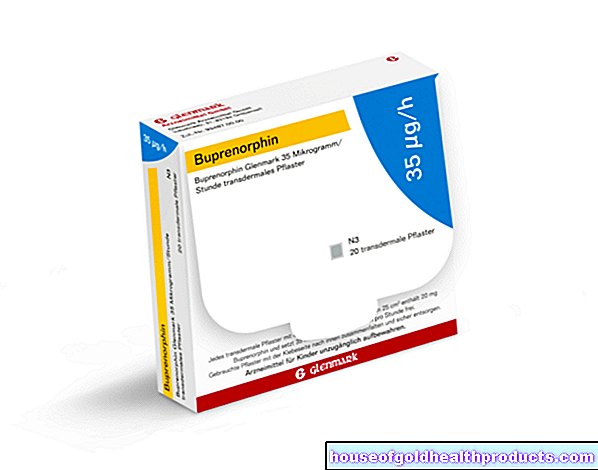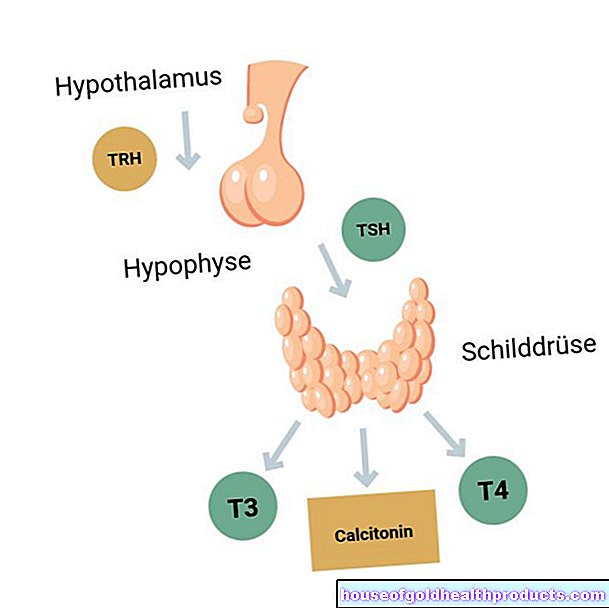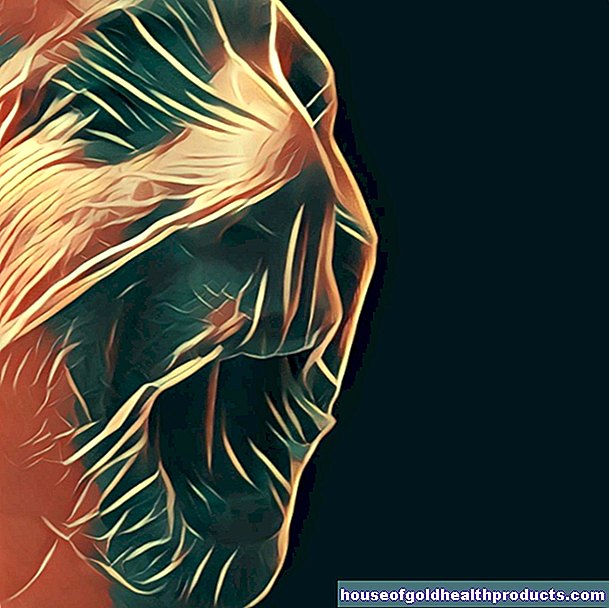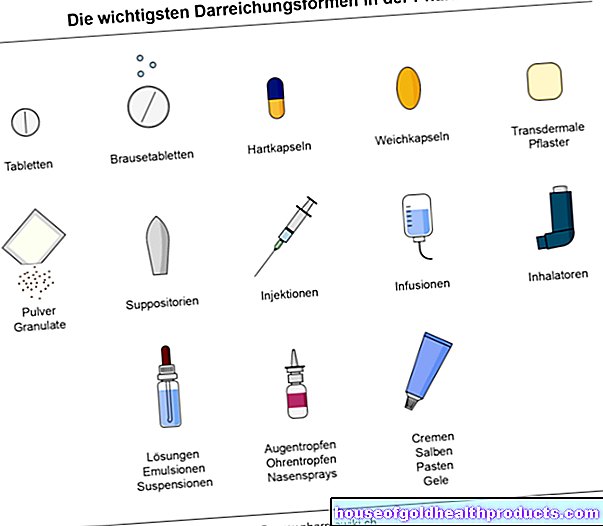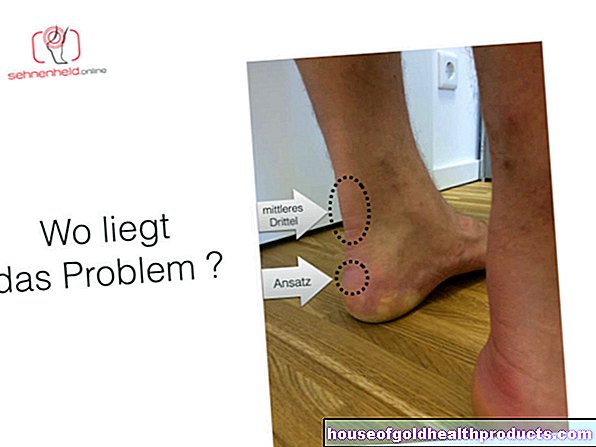Zoonoses
Man comes from the animal kingdom. It is therefore not surprising that some pathogens can be transmitted from animals to humans. The opposite direction, i.e. infections that are passed on from humans to animals, are also possible. Such diseases are called zoonoses. The different types of pathogens then cause infectious diseases. Read here what zoonoses there are and how you can protect yourself from them!
What is a zoonosis?
What are zoonoses? Zoonoses are diseases that occur in both humans and animals. The World Health Organization defines zoonoses as: "Diseases and infections that are naturally transmitted between vertebrates and humans." Over 200 different zoonoses are known worldwide.
In biology and medicine, a distinction is made between different forms of zoonosis, depending on in which direction and how the pathogens are transmitted. The diseases can also be divided according to the type of transmission between living beings.


Classification of zoonoses according to the main direction of infection
In the case of zoonoses, scientists differentiate whether the pathogens pass from animals to humans or from humans to animals. You also speak of the direction of infection. With some pathogens, both directions of infection are possible.
The technical terms for the three directions of infection are:
- Zoo anthroponoses: The pathogens pass mainly from the animal kingdom to humans.
- Anthropozoonoses: Humans transmit pathogens to animals.
- Amphixenoses: The transmission is reciprocal. This means that the pathogens can be transmitted from animals to humans as well as from humans to animals.
Classification of zoonoses according to transmission routes
The way in which the pathogens pass from one living being to another can also be very different in the case of zoonoses. There are these transfer options:
- Direct zoonosis: transmission through direct contact or a mechanical vector such as wind
- Latent zoonosis: the pathogen needs an intermediate host. There it matures, leaves the intermediate host and only then colonizes the final host. An example of this is the beef tapeworm.
- Metazoonosis: Invertebrates such as mosquitoes, lice or ticks are intermediate hosts for the pathogens. In the event of a bite or sting from an infected intermediate host, the pathogens enter the human body and cause diseases such as TBE.
- Saprozoonosis: The pathogens or certain intermediate forms of the pathogen (e.g. larvae) are not found in other animals, but in the soil or in water. When it comes into contact with this pathogen, it reaches an (intermediate) host.
- Cyclozoonoses: During their development, the pathogens need different hosts - they have to switch between different vertebrates. How many hosts are necessary before the pathogen reaches its final host varies.
Zoonoses from A to Z
B.- BSE
- Bath dermatitis
- Schistosomiasis
- Bornavirus infection
- Lyme disease
- Boutonneuse fever
- Brucellosis
- Chagas disease
- Chikungunya
- cholera
- Covid-19: infection with the coronavirus
- Creutzfeldt-Jakob disease
- Dengue fever
- EHEC
- Ebola
- Echinococcosis
- TBE
- Filariasis
- Typhus
- Yellow fever
- Giardiasis
- flu
- Skin fungus
- Hepatitis E.
- Japanese encephalitis
- Head fungus
- Cutaneous larva migrans and hookworm disease
- Lassa fever
- Leishmaniasis
- Listeriosis
- malaria
- anthrax
- Neuroborreliosis
- Ornithosis
- Oxyuriasis
- pest
- smallpox
- Q fever
- SARS
- Sleeping sickness
- Swine flu
- Tinea corporis
- rabies
- Toxoplasmosis
- tuberculosis
- Bird flu
- West Nile fever
- Yersiniosis
- Zika virus infection
How can I get infected with a zoonosis?
Since different types of pathogen can pass between humans and animals, there are also very different ways of getting infected. The transmission routes of zoonoses include:
- Smear infection: With smear infection (also called contact infection) pathogens get from one organism to the next via a chain of contacts. This happens, for example, directly from person to person or, in the case of zoonoses, directly from an animal to a person. Pathogens can also adhere to objects.
- Bite wounds: If a person is bitten by an infected animal, pathogens such as viruses or bacteria can get into the bite wound and infect the person.
- Contaminated animal food (e.g. meat, milk, eggs): For example, those who eat the meat of infected animals can get sick. An example of this transmission route is the beef tapeworm. The meat can contain eggs from the parasite, which then settle in the human intestine.
- Vectors (e.g. wind, mosquitoes, lice, ticks, fleas): A vector transmits a pathogen to humans. The wind can act as a mechanical vector. In the case of zoonoses, however, it is invertebrates that transport the pathogens into the human organism when they are bitten or stung.


Zoonotic agent
Various pathogens can cause zoonoses. This includes:
- Viruses
- bacteria
- Parasites and Plasmodia (single-cell parasites)
- mushrooms
- Prions (pathogenic proteins)
Zoonotic viruses
A virus is a simple, organic structure. It consists of one or more molecules, some viruses are partially surrounded by a protein coat. The molecules contain the genetic material of the viruses in the form of DNA or RNA. This is where the information needed for the virus to multiply is stored.
Viruses do not have their own metabolism. Viruses need a host in order to reproduce. The virus penetrates the host's cells and uses the metabolism of the foreign organism to multiply there. In this way, the virus then spreads in the host's cells and destroys them.
The following viruses can pass from animals to humans and vice versa:
- Monkey pox (special form of smallpox)
- African swine fever (ASF)
- Borna virus
- Chikungunya virus
- Coronavirus
- Dengue virus
- Early Summer Meningoencephalitis (TBE)
- Hantavirus
- Hepatitis E virus
- Influenza
- Crimean Congo Virus
- Lyssaviruses (rabies)
- MERS
- Marburg virus
- Rift Valley Fever Virus
- SARS
- Bird flu
- West Nile Virus
- Zika virus
Note:
Viruses have no metabolism of their own, no energy production of their own and no possibility of producing proteins. Strictly speaking, they do not belong to living beings.



bacteria
Bacteria are made up of cells without a nucleus. Your genetic information is located in the form of DNA directly inside the cell. There are a wide variety of bacteria. Some live in symbiotic coexistence with humans, for example on the surface of the skin or in the intestines.
However, other bacteria are harmful to humans. They cause various diseases. Bacteria can also be transmitted from animals to humans - or vice versa. The following bacteria and the diseases that cause them belong to the class of zoonoses:
- Bacillus anthracis: These bacteria cause anthrax, also called anthrax
- Borrelia: The pathogen is responsible for the disease borreliosis
- Brucella: Causes the disease brucellosis
- Campylobacter: causes diarrhea
- Coxiella burnetii: trigger for the so-called Q fever
- Escherichia coli: pathogen of various diarrheal diseases, including EHEC
- Francisella tularensis: bacteria cause tularemia (rabbit plague)
- Mycobacterium tuberculosis complex: Various bacteria that cause tuberculosis
- Rickettsia: Bacteria that are transmitted by fleas, lice, ticks or mites and that cause fevers in humans
- Staphylococci: cause infections in different parts of the body (e.g. skin, joints, organs)
- Vibrios: There are so-called non-cholera vibrios and cholera toxin-producing Vibrio cholerae. The bacteria Vibrio cholerae cause cholera.



Parasites
Parasites are organisms that use a host for food supply or as a habitat. The host therefore serves the nutrition and reproduction of the parasites and has no advantages whatsoever from this unwanted coexistence.
There are many different parasites. They can consist of one or more cells. Single-cell parasites are about:
- Leishmanias: Are transmitted by mosquitoes and cause leishmaniasis
- Toxoplasma gondii: Parasites found in the feces of cats that cause toxoplasmosis in humans
- Plasmodia: cause the tropical-subtropical infectious disease malaria. Depending on the type of pathogen, different forms of the disease develop.
Multicellular parasites are also called helminths. However, they are better known colloquially as worms. The parasitic zoonoses of helminths include:
- Flatworms are divided into:
- Flukes: Pair of leeches (schistosomiasis) cause schistosomiasis
- Tapeworms: Dog or fox tapeworms cause echinococcosis
- Roundworms and roundworms include:
- Pinworms: responsible for the disease oxyuriasis
- Roundworms: trigger toxacarosis
- Hookworms: cause cutaneous larva migrans and hookworm disease
- Filariae: cause of filariasis



mushrooms
Besides plants and animals, fungi are the third large group of organisms with a cell nucleus. If a fungus settles on or in the human body, it is a mycosis. Fungi can cause various diseases. They often affect the skin, mucous membranes, and nails.
Some fungal infections can spread from animals to humans. This includes:
- Cryptococcus: yeast found in bird droppings that mainly causes pneumonia
- Trichophytes: thread fungi that attack and damage skin, hair and nails
- Mircrosporum canis: thread fungus that is transmitted from dogs (but also cats) to humans; it affects the skin (scalp, face, trunk and extremities)


Prions
Prions are proteins that occur naturally in the human body, but can also be harmful to health. Prions have only been known as pathogens for a few years and have not yet been fully researched. Scientists suspect that prions are formed when a normal protein is incorrectly folded.
The changed structure is transferred to other proteins in the body. These changes can occur sporadically or be caused by a genetic defect. The zoonotic prion diseases include Creutzfeld-Jakob disease, a fatal disease of the nervous system.

Aside from zoonoses, there are a variety of infectious diseases. You can find out which ones belong and how they are treated on the topic page “Infectious Diseases”.

Protection against zoonoses
Various measures are required to protect yourself effectively against zoonoses.
Hygiene measures
There are several hygiene measures that can protect you from becoming infected with a zoonosis. These include:
- Regular and thorough hand washing or disinfection
- Household hygiene (especially if there are animals in the household)
- no direct contact with animal feces
Proper hygiene when preparing food also protects against zoonoses:
- In holiday destinations, only drink water from sealed bottles or boiled water
- Refrain from eating raw meat or eggs
- Fry the meat well before eating it, this will kill pathogens
In nature you can become infected with zoonotic pathogens. Therefore:
- Avoid contact with dead animals
- Do not touch any wildlife
- Do not drink water directly from a lake or river
- Do not eat mushrooms or fruits close to the ground
- Look for ticks after spending time outdoors
- Sleep under a mosquito net when camping
- In (sub-) tropical areas: Cover your body with clothing and use insect repellants on uncovered skin
Vaccinations
Vaccinations are the most effective protection against a specific infection. The body gets to know the pathogen through the vaccine and forms a functioning defense system. If it then encounters the “real” pathogen during an infection, the immune system can fight it and prevent an illness. You can read more about the individual vaccinations in the respective specialist texts on the individual zoonoses.


Strong immune system
The immune system is responsible for ensuring that not every contact with a pathogen immediately leads to an illness. There are a few tips on how you can strengthen your body's defenses:
- Whole food (balanced with lots of fresh fruit and vegetables and whole grain products)
- At least two liters of water or unsweetened tea a day
- Sufficient and regular exercise
- Regular sleep rhythm
- No ongoing stress for the body and mind
You should also avoid stimulants such as alcohol and nicotine. These can inhibit the performance of the immune system.



















